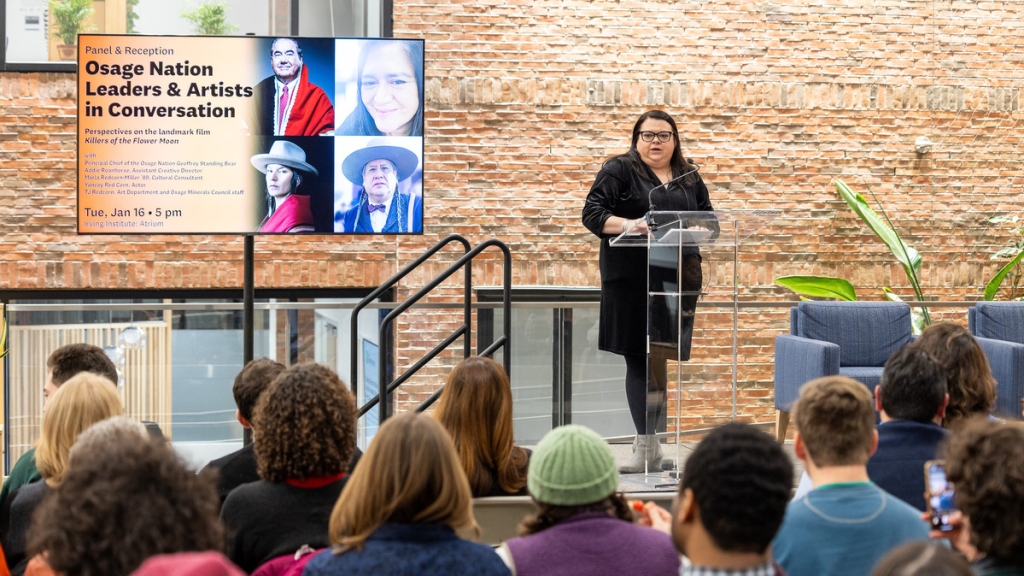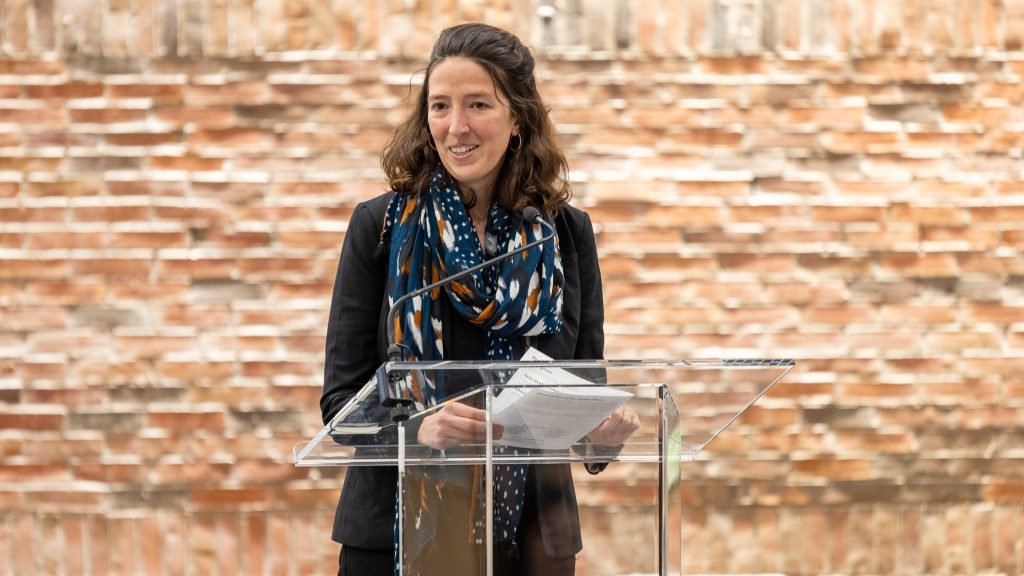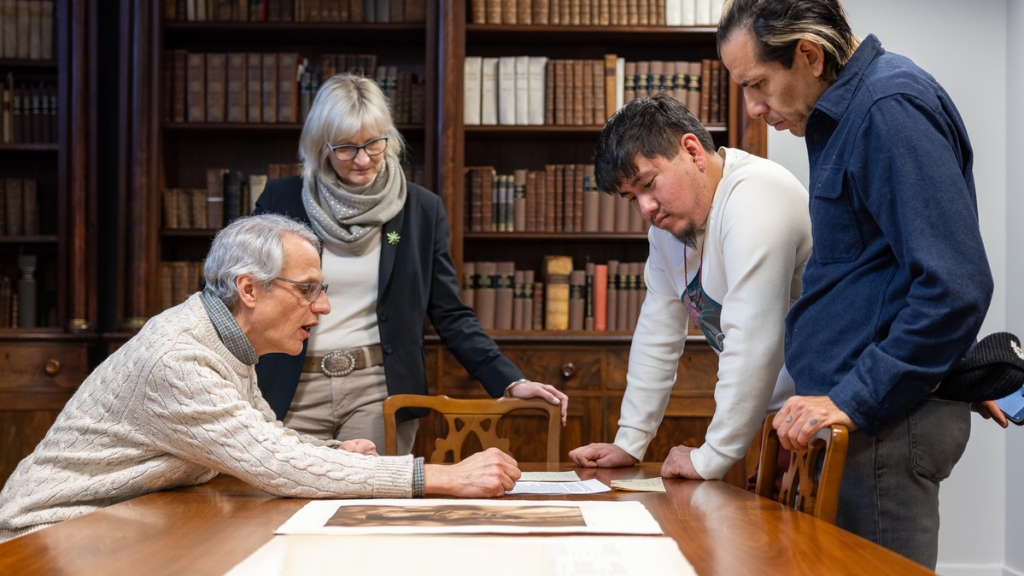During a visit to Dartmouth this week, citizens of the Osage Nation said director Martin Scorsese made a concerted effort to incorporate Osage cultural knowledge into Killers of the Flower Moon.
The critically acclaimed film tells the heartbreaking story of what is known as the "Reign of Terror," a series of murders on the Osage reservation in Oklahoma in the 1920s.
Osages became among the wealthiest people in the world following the discovery of oil on the reservation and were targeted for their shares in the minerals estate, in many cases by corrupt guardians appointed to manage the funds of Osage "wards" or by white spouses who had married into the tribe out of greed.
A panel discussion Tuesday at the Arthur L. Irving Institute for Energy and Society brought together several Osage leaders and artists who worked on the film, which is based on David Grann's prizewinning nonfiction book of the same title. The participants discussed Scorsese's collaboration with the tribe, how it shaped Killers, and the film's potential cultural impact.
The event, which was also livestreamed, was produced by the Hopkins Center for the Arts in conjunction with a Hop screening of the film. It was part of a three-day residency that included a classroom visit, viewing Osage Nation-related material at the Rauner Special Collections Library, a discussion with student groups about extractive industries, and a meeting with President Sian Leah Beilock, and was programmed in conjunction with Dartmouth's Martin Luther King Jr. celebrations.
Moderator Jami Powell, associate director of curatorial affairs and curator of Indigenous art at the Hood Museum of Art, kicked off the conversation by asking about the origins of the collaboration between Scorsese and citizens of the Osage Nation.
Yancey Red Corn, an actor and consultant on the film, said that when Osage Nation Chief Geoffrey Standing Bear heard about the project, he met with the director to ask how the Osages would be treated and recognized in the film.
Soon after, the Osage community of Gray Horse invited Scorsese and his crew to share a traditional meal, where community members recounted what they knew about the murders.
Scorsese "listened to every one of them and didn't interrupt," said Yancey Red Corn, who plays Arthur Bonnicastle, the principal chief of the Osage Nation from 1920 to 1922. Afterward, Scorsese "realized he needed to add more of the Osages and what they're all about into the movie."

Jami Powell, associate director of curatorial affairs and curator of Indigenous art at the Hood Museum of Art, gives opening remarks at the panel discussion produced by the Hopkins Center for the Arts on Tuesday. (Photo By Rob Strong '04)
Powell, a citizen of the Osage Nation, followed up by asking how the listening sessions and Scorsese's respect for the elders assuaged some of the community's concerns about the project.
Marla Redcorn-Miller '89, a cultural consultant for the film, pointed to a "crucial" change in the script. Rather than playing the FBI agent who investigates the murders, as originally planned, Leonardo DiCaprio was cast as Ernest Burkhart, the husband of Mollie Kyle, a wealthy Osage woman.
That placed the focus on the couple's complicated relationship and shifted Killers more toward an Osage perspective, said Redcorn-Miller. Grounding the story within a particular Osage family "helped make it less possible to make it kind of a 'white savior' movie."
TJ Redcorn, who worked in the film's art department, noted that Killers was filmed in Oklahoma, and said the filmmaker's extensive research and effort to include Osages in the movie were key to its authenticity.
"They didn't have to come to Oklahoma. They could have pulled every online article and piece of literature on Osages, but no, they really wanted to involve community members that had cultural knowledge," said TJ Redcorn.
In addition to Grann's book, which tells the story of the birth of the FBI, the film also draws from A Pipe for February, the 2005 novel by Charles Red Corn.
Charles Red Corn, who died in 2017, was the first Dartmouth Tribal Scholar and the father of Yancey Red Corn and Moira RedCorn '88.
The novel, which portrays Osage life in the 1920s, provided color and "an understanding of how we are as a people," said Moira RedCorn, who appears in the film.

From left, Jami Powell and TJ Redcorn listen to artist Yatika Starr Fields during the panel discussion in the Irving Institute. (Photo By Rob Strong '04)
Artist Yatika Starr Fields, who is Osage, Cherokee, and Creek, said the film opens an important dialogue about the murders to the greater public.
"What's happening now are the conversations like we're doing today," said Fields, whose painting White Buffalo Calf Woman is currently on view at the Hood Museum of Art. Those discussions include a deeper exploration of what happened, using artistic modes, and of community, "and how we've come from there to where we are today."
A Q&A after the discussion included the question of whether having a white director was "kind of a necessary evil in Hollywood" to get underrepresented voices and perspectives onscreen.
Yancey Red Corn noted that the film's $200 million budget enabled it to be shown internationally, and that it had touched the hearts of people from many other countries.
Powell said she thinks there are "far more possibilities than limitations" with Scorsese telling the story, and that a single book, movie, or art show "can't tell any of these stories."
"We need multiple stories," she said. "I think this has also opened up opportunities to tell this story in a different way, and from an Osage perspective."
Kaitlyn Anderson '24, an anthropology major, said the discussion reflected how close the panelists were as a community, and their shared knowledge of the film and Osage traditions.
"You really got the sense that this was a group of friends talking about things," said Anderson, who is a Conroy Intern at the Hood Museum and pursuing minors in art history and Native American and Indigenous studies. "It made it a comfortable conversation, even though the topics we were discussing weren't as light."

Hop Film Program Manager Johanna Evans '10 helped coordinate the campus-wide visit by the Osage artists. (Photo By Rob Strong '04)
Hop Film Program Manager Johanna Evans '10, who helped lead the campus-wide coalition that brought the Osage citizens to Dartmouth, said later that it was important to hear their voices.
"Film is an inherently collaborative medium, and the Hop was eager to celebrate how the Osage Nation took this to the next level. The authentic representation of the Osage culture in Killers of the Flower Moon, made possible through our guests' involvement, is essential to viewers finding the deeper truths in this real-life story," Evans said.
The panel discussion and residency were sponsored by Dan Bernstein '87 and Claire Foerster, the Office of the President, Hopkins Center for the Arts, the Hood Museum of Art, the Office of the Provost, the Department of Native American and Indigenous Studies, the Irving Institute for Energy and Society, the Dartmouth Libraries, and the Dartmouth House Communities.
